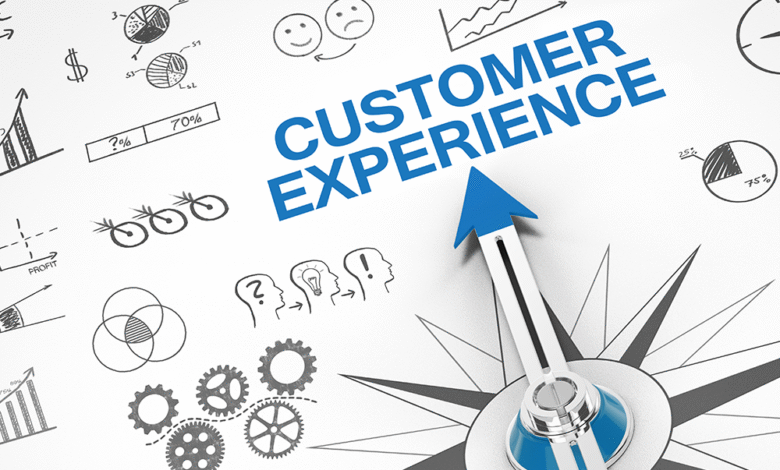Customer Experience Alchemy: Turning Every Interaction into Loyalty

Introduction
Customer experience (CX) is the sum of every interaction a person has with your brand from a first Google search to post-purchase support. In an age where products easily commoditize, CX is the differentiator that builds loyalty, drives referrals, and protects margins. A great CX strategy blends empathy, operational rigor, and measurable improvement cycles. It requires real experience (not just theory) in serving customers, authoritative decision-making backed by data, and transparent communication across the organization. This article gives a practical, EEAT-friendly roadmap: why CX matters, how to map the customer journey, design principles for human-centered experiences, and ways to measure and improve outcomes. Read on for actionable steps you can adopt today, plus concise FAQs to clarify common CX questions.
Why customer experience matters
Customer experience is not a department it’s a competitive asset. When customers feel understood and friction is minimized across touchpoints, they buy more frequently, forgive errors faster, and become advocates. Financially, incremental improvements in retention and loyalty compound over time: acquiring new customers typically costs more than keeping existing ones, so small CX gains often yield outsized ROI. Beyond revenue, CX affects brand perception and team morale: when frontline staff see systems that help rather than hinder, they deliver better service. Importantly, credibility matters customers trust brands that consistently deliver promised value. That’s why experience leaders must demonstrate expertise (design and operations knowledge), experience (real-world case studies and pilots), authoritativeness (clear governance and executive support), and trustworthiness (transparent policies and measurable outcomes). Building CX into product roadmaps, KPIs, and hiring practices ensures that it becomes a durable capability rather than a marketing slogan. In short, CX is the practical expression of how well an organization delivers value and better CX means stronger business fundamentals.
Mapping the customer journey: identify moments that matter
Journey mapping translates abstract customer interactions into a visual tool teams can act on. Start by defining the personas and the key stages they pass through: awareness, consideration, purchase, onboarding, usage, support, and renewal/advocacy. For each stage, capture the customer’s goals, questions, emotions, and channels used. Then identify “moments that matter” the high-emotion, high-impact spots where small improvements deliver big returns (e.g., first login success, billing clarity, or resolution of a support ticket). Use mixed methods to build the map: qualitative interviews to surface feelings, analytics to measure frequency and drop-offs, and frontline feedback to expose operational constraints. Importantly, maps should be living artifacts: revisit them quarterly, update with new data, and prioritize interventions using effort-vs-impact frameworks. A robust journey map aligns cross-functional teams because it clarifies who owns what when and where. When teams can point to concrete moments and metrics, they move from vague aspirations about “improving CX” to specific experiments that drive measurable improvement.
Designing human-centered CX
Human-centered CX starts by treating customers as whole people with needs, emotions, and context not just conversions. Empathy research (interviews, contextual observation) is the foundation: use it to create realistic personas and scenarios. From there, apply design principles such as simplicity (reduce steps and cognitive load), clarity (use plain language across UI and comms), and reliability (ensure core flows work every time). Tactical examples include onboarding checklists with incremental wins, proactive notifications before common failure points, and self-service resources with clear escalation paths. Accessibility and inclusivity should be non-negotiable: ensure designs work across devices, languages, and abilities. Also design for the organization: create playbooks and templates so frontline staff can deliver consistent experiences, and integrate feedback loops so design changes are validated by real users. Finally, balance automation and human touch use automation to remove repetitive friction but keep humans available for complex, emotional, or high-value interactions. The result: experiences that feel effortless and respectful, which in turn build loyalty.
Measuring & improving CX with data and governance
You can’t improve what you don’t measure. Establish a few focused CX KPIs tied to business outcomes: NPS or CSAT for sentiment, first-contact resolution for support efficiency, churn and renewal rates for retention, and task success rates for critical product flows. Complement quantitative metrics with qualitative signals recorded support calls, customer interviews, and open-text feedback to diagnose causes behind trends. Set up dashboards that combine product analytics (funnel drop-offs), operational metrics (response times), and financial indicators (LTV, churn). Equally important is governance: create a cross-functional CX council (product, support, marketing, ops) with decision rights, a quarterly roadmap for CX initiatives, and an experiment pipeline with clear owners. Use A/B tests, pilot programs, and customer advisory boards to validate changes before scaling. Finally, institutionalize learning with blameless retrospectives and a knowledge base of successful playbooks. Measurement plus governance turns ad-hoc fixes into sustained capability.
Conclusion
Customer experience is a strategic discipline that requires empathy, evidence, and execution. By mapping journeys, designing with humans in mind, and measuring what matters, organizations can move from reactive problem-solving to proactive value creation. Strong CX is built through a cycle of learning: listen, prototype, measure, iterate and repeat. When experience becomes part of the organizational fabric, it yields loyal customers, healthier unit economics, and a culture that values service. Start small with one “moment that matters,” measure its impact, and scale what works. That’s how CX stops being an aspiration and becomes your brand’s strongest asset.
Frequently Asked Questions
Q1: How long before CX improvements show results?
Small changes (e.g., clearer onboarding emails) can show early signal in weeks via engagement metrics; larger structural changes (billing redesign, new support model) may take months to fully impact retention and revenue. Measure continuously and report progress.
Q2: Which metric should I prioritize first?
Start with one outcome tied to business goals for subscription businesses, retention or churn; for transactional businesses, repeat purchase rate. Complement with CSAT or NPS to monitor sentiment.
Q3: Should CX be centralized or distributed?
Both: centralize strategy, measurement, and standards; distribute execution to product lines and frontline teams. A central CX function can maintain consistency while empowering local ownership.
Q4: How do I get buy-in for CX investments?
Use small pilots that demonstrate ROI (reduced support costs, higher conversions). Pair quantitative results with customer stories to persuade stakeholders emotionally and intellectually.
Q5: Can automation hurt CX?
Poorly designed automation can alienate customers. Use automation for predictable, repetitive tasks and always provide clear ways to reach a human when needed.



